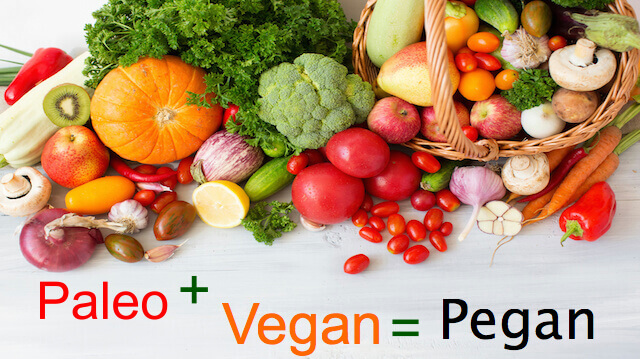
It is not strictly paleo or vegan, it is pegan. This new diet is the perfect blend of the best things about both paleo and vegan eating, without all the restrictions. Some of the greatest difficulties in following either diet is missing grains if you are eating paleo, or lacking protein if you try to eat strictly vegan.
“I wanted to combine the very best aspects of a paleo and vegan/vegetarian diet rather than cherry-pick studies and pick sides,” said Mark Hyman, M.D., who coined the term pegan diet. “Combing research with my several decades working with patients, I pulled together this plan. Once you get the hang of it, the pegan diet becomes easy to stick to and delivers fast but lasting results.”
Pegan focuses primarily on fruits and vegetables
“By combining the principles of these two diets and reducing their specific dietary restrictions, you get a diet that’s better balanced in regards to macronutrients, and easier to follow than a strictly paleo or vegan diet,” explained Caroline Cederquist M.D., creator of bistroMD and author of The MD Factor.
Since there is an emphasis on eating plant-based foods in both paleo and vegan diets, it is easy to blend the two. Pegan eaters try to incorporate plant-based foods in 75 percent of their diet. The remaining 25 percent is then comprised of high-quality fats and animal protein.
“The pegan diet is a somewhat odd combination because the foundation of vegan diets is a belief of not consuming any animal products,” said nutritionist and chef Beth Saltz, MPH, RD. “A better description is probably a very clean, modified paleo diet.”
“Some of the problems with paleo and vegan diets are that they are difficult to follow,” commented Kristin Kirkpatrick, a registered dietician at The Cleveland Clinic Wellness Institute. “This approach is very sustainable for the average person.”
Specifics of pegan eating
As mentioned briefly above, fruits and vegetables make up the majority of the daily dietary intake for pegan eating. These plant-based foods should make up a full 75 percent of your daily diet. They are the primary source for minerals and vitamins your body needs to stay healthy.
As for animal proteins, they should all come from organic, grass-fed, antibiotic-free animals. Sources like wild-caught fish, eggs, beef, and chicken should not exceed more than 25 percent of your daily food intake.
High-quality fats are also an important part of your regular diet and should come from sources such as avocado, coconut, and olive oils, as well as nuts and other omega-3 fat sources.
Grains are a large part of the vegan diet and are responsible for providing B vitamins. To incorporate them into the pegan diet, simply choose organic, gluten-free whole grains such as quinoa.
 Pegan dieters just say “no” to dairy
Pegan dieters just say “no” to dairy
Neither vegans nor paleo eaters allow a place in their diet for dairy. Because of the numerous people who have trouble digesting it, dairy does not have a place in the pegan diet either.
Unlike the vegan diet that allows for soy, it is not allowed in pegan eating any more than it is in paleo. Too much scientific evidence links genetically modified soy products with hormone disruption.
As with pretty much any other diet, sugar should be considered a treat and consumed sparingly, if at all. It too is scientifically linked with a long list of health problems and diseases.
“Basically, it sounds very healthy and eliminates a lot of problem foods,” said Saltz.
If you are searching for a healthy eating plan and have felt too restricted by the vegan or paleo diets, then it’s time to consider pegan. Making some healthy choices for your body will pay off in all aspects of your life.
—The Alternative Daily
Sources:
http://www.cnn.com/2015/06/17/health/pegan-diet/index.html
http://www.thedailybeast.com/articles/2015/06/30/the-pegan-diet-should-you-try-this-paleo-vegan-hybrid.html
https://www.yahoo.com/health/what-is-the-pegan-diet-120042617487.html

